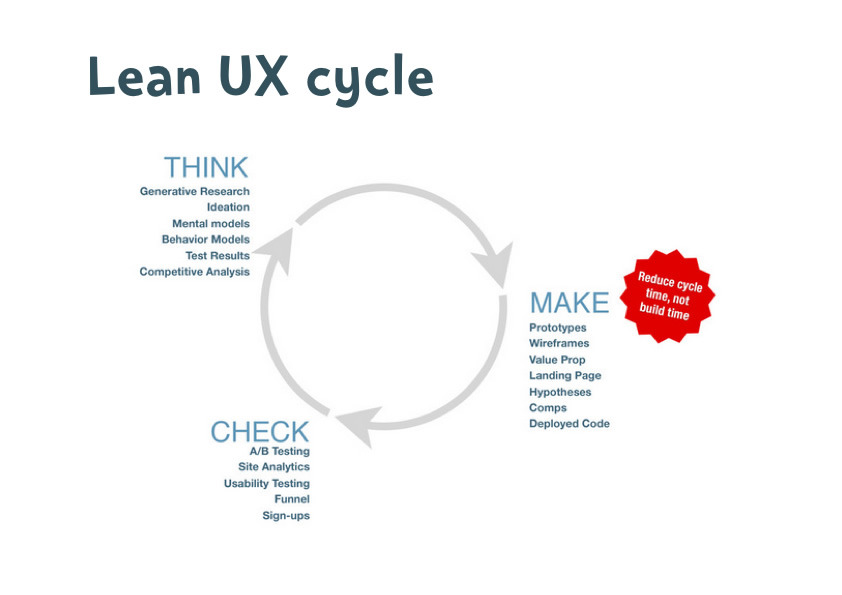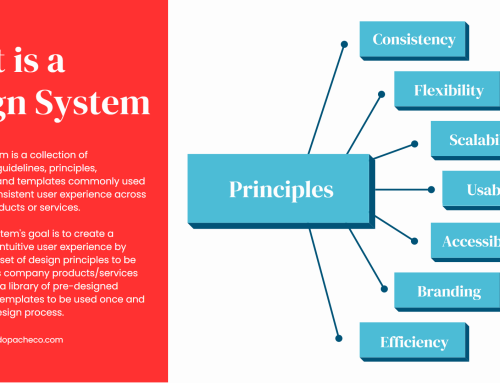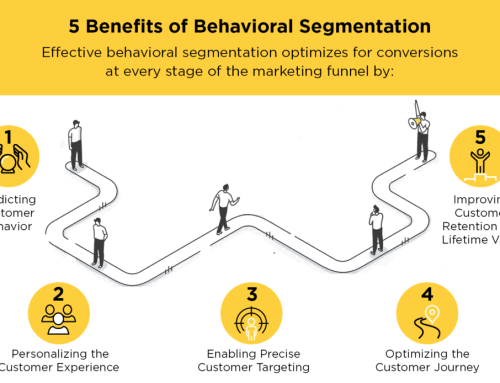Lean UX is a design methodology that focuses on creating a minimal viable product (MVP) and iterating on it based on user feedback.
This approach prioritizes user needs and business goals over the traditional UX design process, which often focuses on creating comprehensive design specifications upfront.
Lean UX is based on the principles of lean startup, which emphasizes the importance of creating and testing an MVP to validate assumptions and gather user feedback. This approach allows designers to quickly and efficiently identify what works and what doesn’t, and make necessary adjustments on time.
In contrast to traditional design methods, Lean UX encourages designers to work closely with stakeholders and users throughout the design process. This collaborative approach allows designers to better understand user needs and business goals and ensures that the final product aligns with both.
The Lean UX process typically involves the following steps:
- Define the problem: The first step in the Lean UX process is to identify the problem that the product is intended to solve. This can be done through market research, user interviews, and other methods of gathering customer insights.
- Ideate: Once the problem has been defined, the next step is to generate ideas for how to solve it. This can involve brainstorming sessions, sketching, or prototyping to come up with potential solutions.
- Prototype: After generating ideas, the next step is to create prototypes of the product. Prototyping can be done using a variety of methods, such as paper prototyping, digital prototyping, or even simple sketches. The goal of prototyping is to create a rough version of the product that can be tested with users.
- Test: Once a prototype has been created, the next step is to test it with users. This can be done through usability testing, focus groups, or even simple interviews with potential users. The goal of testing is to gather feedback and insights that can inform the next iteration of the design.
- Iterate: Based on the feedback gathered during testing, designers can iterate on the design, refining and improving it based on user needs and preferences. This process is repeated until the product is deemed ready for launch.
- Launch: Once the product has been developed and tested, it is ready to be launched to the public. This may involve additional testing and validation, as well as marketing and promotion efforts to ensure that the product is successful in the market.
The Lean UX process is iterative and flexible, allowing designers to quickly and efficiently make adjustments based on user feedback. This approach is particularly useful for startups and companies operating in rapidly changing markets, where the ability to quickly adapt to user needs and market conditions is essential.
In conclusion, Lean UX is a design methodology that focuses on creating a minimally viable product and iterating on it based on user feedback. This approach prioritizes user needs and business goals and encourages collaboration between designers and stakeholders. By allowing for a more efficient and agile design process, Lean UX is particularly useful for startups and companies operating in rapidly changing markets.
Benefits of Lean UX
Lean UX is a design approach that emphasizes rapid experimentation and iteration to quickly test and validate design ideas.
It is based on the principles of lean startup, which aims to minimize waste and maximize efficiency in the product development process.
Some benefits of Lean UX include:
- Allows designers to validate assumptions and gather user feedback early in the design process, reducing the risk of building a product that doesn’t meet user needs or achieve business goals.
- Encourages collaboration between designers and stakeholders, ensuring that the final product aligns with both user needs and business goals.
- Allows for a more efficient and agile design process, enabling designers to quickly and efficiently make adjustments based on user feedback.
- Faster time to market: By rapidly prototyping and testing designs, it is possible to get a product to market faster, allowing companies to be more responsive to changing customer needs and market conditions.
- Cost savings: Lean UX can help reduce the cost of product development by eliminating the need for lengthy design and development cycles.
- Increased collaboration: Lean UX encourages collaboration between designers, developers, and stakeholders, which can lead to a more cohesive and effective product team.
- Better user experience: By testing design ideas with real users early and often, it is possible to identify and address usability issues before they become problems in the final product.
- Increased customer satisfaction: By focusing on customer needs and quickly iterating on design ideas, it is possible to create a product that better meets the needs and expectations of the target audience.
Lean UX best practices in Product Development
Here are four examples of how the Lean UX process can be applied in product development:
- Rapid prototyping: In Lean UX, prototyping is used as a tool to test and validate design ideas very quickly. The prototyping can be done through a variety of methods, such as paper prototyping, digital prototyping, or even simple sketches. By creating a rough prototype of the product and testing it with users, designers can gather valuable feedback and insights that can inform the next iteration of the design.
- User testing: User testing is an important part of Lean UX, as it allows designers to get real-time feedback from users and make informed decisions about the direction of the product. This can be done through usability testing, focus groups, or even simple interviews with potential users.
- Iterative design: In Lean UX, designers work in short sprints, constantly iterating and refining the design based on user feedback. This formula allows designers to identify and address problems/issues with the product, and make sure that the final product meets the needs and expectations of the target audience.
- Cross-functional collaboration: Lean UX encourages collaboration between designers, developers, and stakeholders, which can lead to a more cohesive and effective product team. By working closely together, team members can identify and address problems early in the process, which can save time and resources in the long run.






Leave A Comment